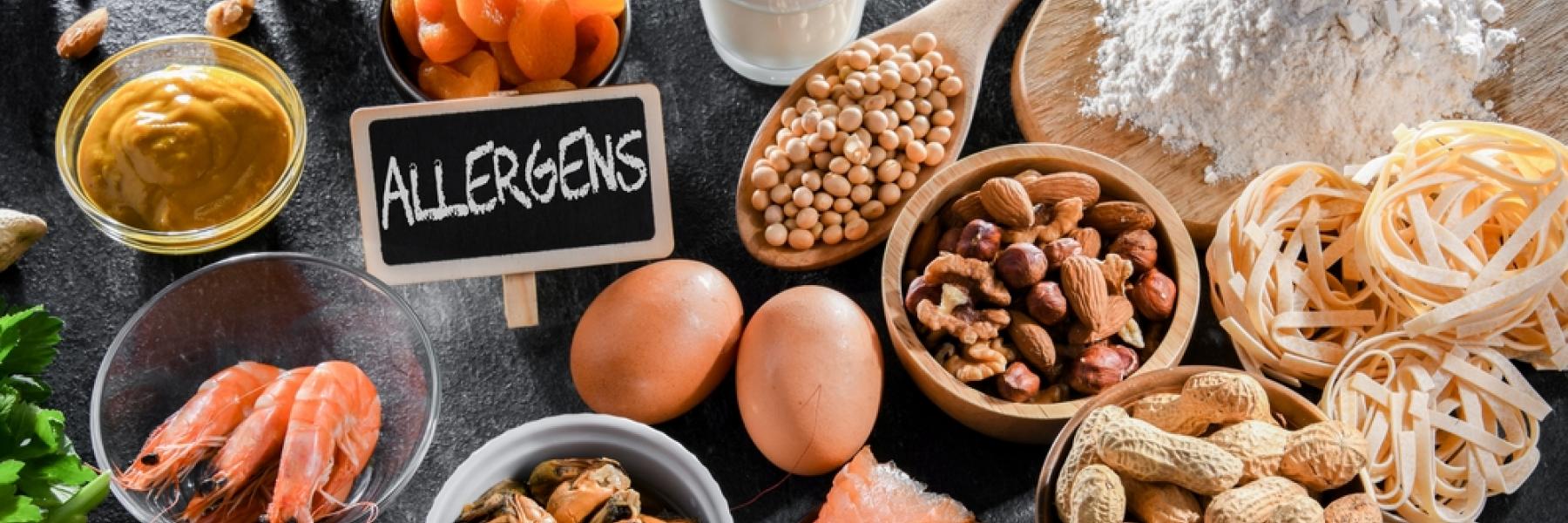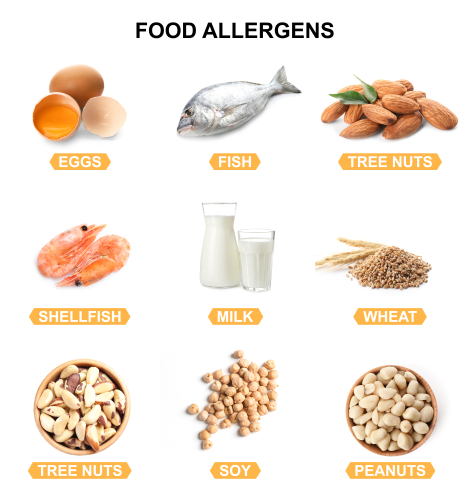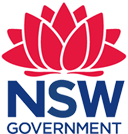
Safe Introduction of Common Allergens
Once your baby shows that they are ready for solid foods (approximately 6 months old), it is important to introduce foods that nourish and support the growth of your baby. This is also the time to start introducing the common allergy causing foods.
It is important to introduce as many allergy causing food before the age of one to prevent food allergies. If you are breastfeeding, continue to do this while introducing solid foods. If not breastfeeding, then continue to use infant formula.
What are the most common food allergens
Milk (dairy): An allergy to milk is one of the more frequent food allergies worldwide. Products that may include dairy (but not limited to): any milk product, butter, cheese, chocolate, cream, ice cream, infant formula, yoghurt.
Egg: An allergy to egg is common in young children and both the egg white and yolk can trigger an allergic reaction. Products that may include egg (but not limited to): whole/part of raw/cooked egg, baked goods, custard, a variety of desserts, pasta, mayonnaise.

Fish: Fish allergies are generally for tinned fish such as salmon, and tuna. Products that may include fish (but not limited to): Asian sauces (fish/oyster sauce), dips, pasta sauces, soups.
Peanut: An allergic reaction to peanuts can happen within minutes or up to several hours after eating foods containing peanuts. Products that may include peanut (but not limited to): cereals, muesli bars, mixed nuts, peanut oil, peanut butter.
Sesame: Sesame allergies are usually a lifelong allergy. Sesame has many other names, including (but not limited to): Benniseed, Halvah, Sesomolina, Til. Products that may include sesame (but not limited to): hummus, sesame oil, tahini, Middle Eastern snacks.
Shellfish: Shellfish allergies refer to aquatic shelled animals like molluscs (oysters, squid) and crustaceans (prawns, crab, lobster). Products that may include shellfish (but not limited to): Asian soups, sauces, prawn crackers/chips, seafood flavouring.
Soy: Soy is found in many foods that we do not expect, but is less common than peanut, egg or milk allergies. Soy has many other names: bean curd, tamari, tempeh and tofu. Products that may include soy (but not limited to): edamame, miso, any soy-based product, stock cubes, pancakes.
Tree nuts: Tree nuts, or simply “nuts” are one of the most common food allergies worldwide. They include almonds, Brazil nuts, cashews, hazelnuts, macadamias, pecans, pistachios, chestnuts and walnuts. Products that may include nuts (but not limited to): Asian dishes, baked goods, cereals, dips, nut oils, pastes and spreads.
Wheat: Wheat is found in many common foods. Products that include wheat (but not limited to): couscous, graham flour, semolina, spelt, and any wheat-based products (pastas, noodles, sauces, soups and cereals).
For more detailed information on food allergies and avoidance, please visit ASCIA (Australasian Society of Clinical Immunology and Allergy).
How to introduce these foods
When introducing solid foods to your baby, only introduce one common allergy food at each meal so the food can easily be named if there is a reaction.
Begin with a small amount of the allergy-causing food. You could begin by placing a small amount of the food on the inside of their lip to start. Once no reaction is seen, you can continue to feed your baby more. Start with a quarter of a teaspoon and increase the amount as your baby grows and eats more.
If you think your baby is having a reaction to any food, you must stop feeding the baby and seek medical attention. For information on identifying an allergic reaction, please visit Identifying allergic reactions.
Never rub the food on your baby’s skin, as this may increase the chance of your baby developing a food allergy.
Once a food has been safely introduced, continue including these foods into their regular diet. Only avoid food that you think your baby has reacted to. Make note that reactions can be immediate or up to several hours after consuming foods.
For more detailed information on introducing common allergens, please visit Nip allergies in the bub and ASCIA.
Reading labels
Food allergies can be life-threatening, and for people with an allergy, the only way to manage the allergy is to avoid the food. In Australia, laws govern mandatory labelling of the nine most common allergy-causing foods (peanut, tree nuts, milk, egg, fish, shellfish, wheat, sesame, and soy). These allergens must be declared on any packaging.
Carefully read the ingredient label on any pre-packed food:
-
Read all product labels every time you buy a product. These can change without warning.
-
Use extra care when using imported goods. Labelling laws are not as strict as Australian standards.
-
Check labels on the outer and inner packaging
-
Check labels of products that come in different sizes as this may affect the ingredients.
-
Don’t rely on labels “free from...” Read the ingredient list.
-
Find the alternate names for common allergens.
For more detailed information on allergen labelling visit Food Standards Australia New Zealand.
Related Articles:
[National Allergy Strategy, 2018; ASCIA, 2022; Australian Institute of Food Safety, 2021; Food Standards Australia & UK, 2021; Allergy and Anaphylaxis Australia, 2022.]
Related Topics

For the first 6 months of their life, your baby gets all the nutrition they need from breastmilk or formula.

Letting your baby feed themselves can be messy and frustrating, but it is an important stage of development.

If your baby is under 6 months of age, the only fluid they need is breastmilk or formula.

